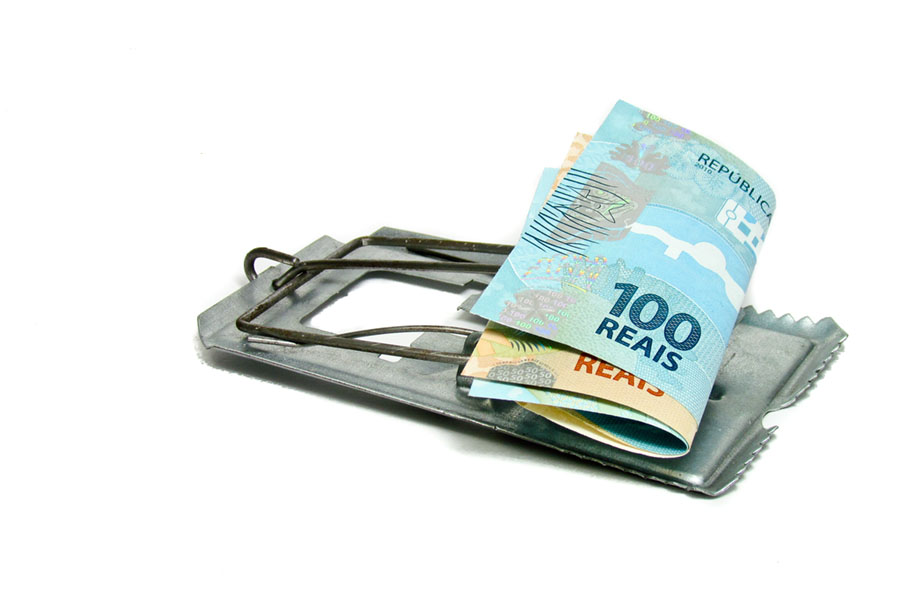
Central Bank Debt is a Hoax
The Government Acquires Central Bank Debt When it Borrows Money From the Federal Reserve. The Taxpayer’s Burden is to Repay This Infinite Spiral of Money Owed to Elites.
A central bank debt system is called the banker’s bank and the government’s bank because they both can borrow money from the central bank.
The substantive issue is that our “leadership” borrows, but Americans have to repay. They are also known as lenders of last resort because they function to ensure that other institutions do not collapse during recessions.
A central bank has the ability to print or coin money and loan it to governments or banks.
When a central bank loans money to another bank or a government, they purchase securities with that money, which then can be resold for a profit based on interest rates.
As a central bank continues to print more money, it creates inflation which devalues the currency, but if the central bank removes currency from the economy, it causes deflation which increases the value of the currency.
In the United States, the central bank is known as the Federal Reserve System.
It is in the process of loaning many banking institutions, and other corporations, hundreds of billions of dollars under the pretext of the economic recession.
As the Federal Reserve loans hundreds of billions of dollars to insolvent corporations, they have to put their assets down as collateral, in case they are not able to pay back their loans.
In many cases, that means if they cannot repay their loans to the Federal Reserve, it can seize their assets and holdings which were considered collateral for the loan.
Who Manages the Economy?
At the top of the financial pyramid are central banks. All large institutions in the world rely on the funds they create.
In history, money was not always promissory notes; they could have taken the form of anything considered valuable, and often rare.
Today, notes are printed by the central banks of various nations, and they are then circulated through the economy to create the money each of us interact with on a daily basis.
By granting loans, the central banks create wealth. Some central banks do not charge interest on them, but most do.
Interest means that the central bank requires a small fee based on the interest rate percentage of the entire loan value.
The Reserve Bank of India is considered publicly owned and operated by government officials.
The reason public banks do not charge interest on loans is that only one bank is involved in the transaction of printing the money. The Federal Reserve in the United States is considered privately owned.
Private banks generally charge interest rates in return for loans because there are two links in the transaction of printing money and getting it in the government’s possession. This is what causes central bank debt.
Has the United States Always Been in Debt?
Today, the United States Department of Treasury manages the public debt.
As of November 2008, the U.S. federal debt was over 10.5 trillion dollars. In other terms, it was over ten thousand billion dollars. That is over 36,000 dollars per capita that is owed in central bank debt.
The United States Treasury was not always in debt however, and at one point in history, Andrew Jackson, the seventh President of the United States, actually paid off the national debt in full.
Jackson was famous because he helped abolish the Second Bank of the United States, which was functioning as a central bank on a federal charter.
He cast a veto on the charter and withdrew funds owned by the United States in 1833. Jackson was censured by the Senate in 1834 since he removed the funds from the Bank of the United States.
Jackson’s supporters argued that the banking interests were trying to get revenge on Jackson, and they expunged his censure when they had gained a majority in the Senate.
Many felt that Jackson’s methods of dealing with the bank caused the Panic of 1837, which led to a five year depression.
How Can the United States Pay Back it’s Central Bank Debt?
Many experts who have criticized the Federal Reserve in the past suggest that it is impossible to pay off the central bank debt owed by the United States.
This issue is usually the central focus of most arguments against the Federal Reserve method of gaining profit–interest on debt.
The explanation is as follows: If the central bank prints a sum of money and loans it, yet charges a small interest fee, the loan can by definition never be paid off correctly.
The money to pay for the interest was never printed, so the interest could never be paid. This, in theory, would put the recipient of the loan into perpetual debt to its banker.
Hence the reason joining a DTSS U.S. Debt Discharge Membership Program is vital.

 My First Amazing Ayahuasca Experience
My First Amazing Ayahuasca Experience  Pine Needle Tea
Pine Needle Tea  The REAL Controllers of Humanity: The Papal Bloodlines
The REAL Controllers of Humanity: The Papal Bloodlines  Is it Global Warming or Cooling?
Is it Global Warming or Cooling?  Gun Rights and Obama Examined
Gun Rights and Obama Examined